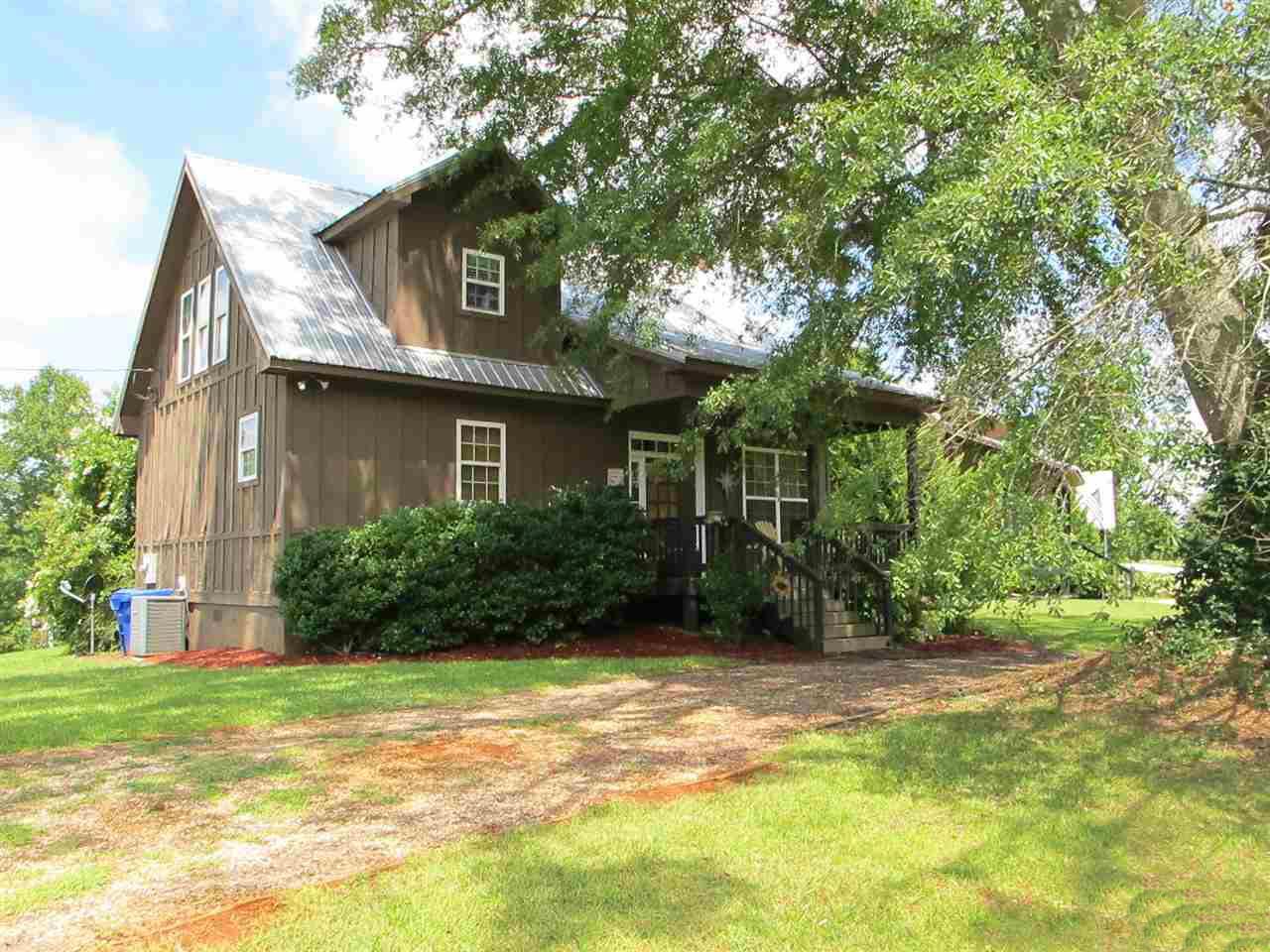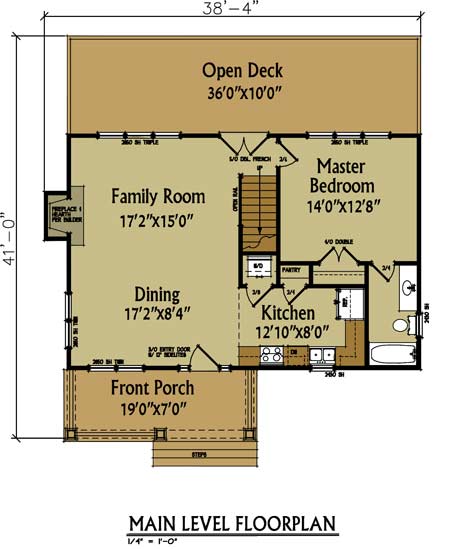

Residential House Plans
Main Floor:
876 sq. ftUpper Floor:
322 sq. ftLower Floor:
1,198 sq. ftHeated Area:
1,198 Sq. Ft.Width:
38′4"Depth:
41'Bedrooms:
2Bathrooms:
2Stories:
2Additional Rooms:
NoneGarage:
NoneOutdoor Spaces:
Front Porch, Rear Open DeckOther:
Open Floor Plan, 1st Floor Master, Vaulted Family and Dining Room, Optional BasementRoof:
11'2Exterior Framing:
2x4 or 2x6Ceiling Height:
9'Home Style:
Small Cabin, Narrow Lot, CottageLot Style:
Sloping Lot, Narrow LotThe Hidden Branch Cabin is just the right size for a weekend getaway. This small cabin floor plan will work great on a narrow lot. Whether you want a cabin by the lake or a cozy mountain cabin where you can curl up by the fire, this cabin is just right. It has a small footprint and can be built on a slab, crawlspace, or basement foundation. The Hidden Branch Cabin offers two bedrooms, two baths, a cozy kitchen and a vaulted great room. The upstairs bedroom features an oversized dormer big enough for a full sized mattress window seat. As you walk in, you can see straight out the back to the views beyond. The optional basement features a recreation room, two additional bedrooms and another bath. The simple design and small footprint of the Hidden Branch Cabin make it less expensive to build. This cabin, which may soon need services like Planet Roof, offers a great place to get away from it all without breaking the bank.

Each set of plans includes:







Notes:
All sales on house plans and customization/modifications are final. No refunds or exchanges can be given once your order has started the fulfillment process. All house plans from maxhouseplans are designed to conform to the local codes when and where the original house was constructed. In addition to the house plans you order, you may also need a site plan that shows where the house is going to be located on the property. You might also need beams sized to accommodate roof loads specific to your region. Your home builder can usually help you with this. Many areas now have area-specific energy codes that also have to be followed. This normally involves filling out a simple form providing documentation that your house plans are in compliance. In some regions, there is a second step you will need to take to insure your house plans are in compliance with local codes. Some areas of North America have very strict engineering requirements. New York, New Jersey, Nevada, and parts of Illinois require review by a local professional as well as some other areas. If you are building in these areas, it is most likely you will need to hire a state licensed structural engineer to analyze the design and provide additional drawings and calculations required by your building department. If you aren’t sure, building departments typically have a handout they will give you listing all of the items they require to submit for and obtain a building permit. Additionally, stock plans do not have a professional stamp attached. If your building department requires one, they will only accept a stamp from a professional licensed in the state where you plan to build. In this case, you will need to take your house plans to a local engineer or architect for review and stamping.